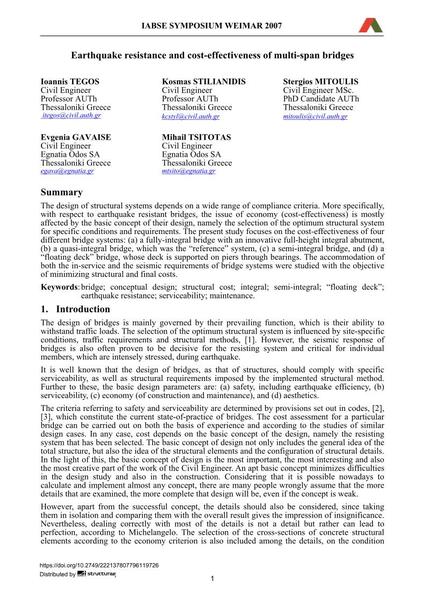Earthquake resistance and cost-effectiveness of multi-span bridges

|
|
|||||||||||
Bibliografische Angaben
| Autor(en): |
Ioannis Tegos
Kosmas C. Stylianidis Stergios Mitoulis Evgenia Gavaise Mihail Tsitotas |
||||
|---|---|---|---|---|---|
| Medium: | Tagungsbeitrag | ||||
| Sprache(n): | Englisch | ||||
| Tagung: | IABSE Symposium: Improving Infrastructure Worldwide, Weimar, Germany, 19-21 September 2007 | ||||
| Veröffentlicht in: | IABSE Symposium Weimar 2007 | ||||
|
|||||
| Seite(n): | 64-65 | ||||
| Anzahl der Seiten (im PDF): | 8 | ||||
| Jahr: | 2007 | ||||
| DOI: | 10.2749/222137807796119726 | ||||
| Abstrakt: |
The design of structural systems depends on a wide range of compliance criteria. More specifically, with respect to earthquake resistant bridges, the issue of economy (cost-effectiveness) is mostly affected by the basic concept of their design, namely the selection of the optimum structural system for specific conditions and requirements. The present study focuses on the cost-effectiveness of four different bridge systems: (a) a fully-integral bridge with an innovative full-height integral abutment, (b) a quasi-integral bridge, which was the “reference” system, (c) a semi-integral bridge, and (d) a “floating deck” bridge, whose deck is supported on piers through bearings. The accommodation of both the in-service and the seismic requirements of bridge systems were studied with the objective of minimizing structural and final costs. |
||||
| Stichwörter: |
Brücke Gebrauchstauglichkeit Wartung semi-integral
|
||||
